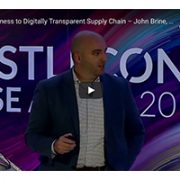Streamlining Settlement Management in SAP S/4HANA
Vivek Barve, Associate Principal, Global Practices, DiSC Execution, Bristlecone
Transactions between any two or more entities can be complex. Many businesses incentivize customers with volume-based discounts, commissions, rebates or royalties. Chargeback scenarios are also routine.
Functionalities that handle such conditions are known as ‘Rebate Processing,’ ‘Condition Contract Management’ or ‘Settlement Management.’
Calculating Rebates the Traditional Way
When setting up rebates in conventional ERP systems, it was essential to keep in mind that the rebate is retroactive, and it was necessary to set up accruals. Retroactive rebate processing needed the system to keep track of all relevant documents – invoices, cancellations, credit and debit memos, etc. As such, the ERP system stored all the relevant invoices in the rebate index table (VBOX).
This table used to contain a massive number of entries (up to millions). Any change in one customer’s condition or the associated rules required the entire table to be rebuilt, during which all rebate data was locked throughout the organization, causing major stoppages and preventing critical maintenance.
There was also a lack of flexibility in defining business criteria for rebates. One had to use separate configuration and transaction codes for both the supplier and the customer side.
Calculating Rebates the SAP S/4HANA Way
SAP S/4HANA has a seamless feature called ‘Settlement Management,’ which enables solutions for the above-mentioned business scenario irrespective of volumes. It handles the settlement of customer and vendor rebates easily and provides a centralized and standardized solution for administering supplier and customer conditions.
Settlement Management in SAP S/4HANA has several key advantages over traditional ERP systems.
Rebate conditions are applied instantly because the system can extract real-time insight from data related to actual business volume and accruals from tables VBAK, VBAP, VBRK and VBRP. Also, both supplier and customer contracts can be defined by a single T-code and entry screen. For organizations that do business with an entity that is both a supplier and a customer, a single contract can be defined.
If a contract is to be created retroactively due to business and market needs, then there is no need to run any additional regeneration reports or rebuild tables as in the ERP logic. Instead, all the documents that fulfill the criteria for the contract automatically get selected based on the Condition Contract.
SAP S/4HANA Settlement Management provides options for inclusion and exclusion of conditions based on customer, material, sales organization, material group, customer hierarchy, product hierarchy and so on. It supports all types of settlement processes – including core business processes that are integrated into the Over the Counter (OTC) and Procure to Pay (P2P) cycles.
You can establish a settlement calendar in Condition Contract from which you can perform delta accruals, partial or final settlement, which can be changed if required during contract lifecycle. You can also define accrual and settlement conditions in Condition Contract, with the flexibility to use them as per business requirements. There is also an option to have scales for these conditions.
Settlement Management as a process can be integrated with LIS, BI, COPA, cash and credit management.
Condition Contract Management
This is an integral part of Settlement Management. Condition Contract stores all information related to an agreement, such as owner, eligible partners and contract conditions. There is an exhaustive list of Condition Contract types that can be selected from various options to suit your business needs.
Condition Contract consists of the following:
- Condition Contract Header
- Eligible Partner
- Conditions
- Settlement Data
A variety of standard reports are available around Condition Contract for day-to-day business use.
Business Volume Determination
Business volume is the crux on which rebate calculations are dependent. Volume can be determined based on value, quantity, weight and other combinations. The key here is that the system determines business volume separately. Business volume is calculated based on standard system tables, and you can even view how the business volume is calculated.
Once business volume is calculated, conditions are applied to determine final credit/debit values.
Settlement
Various types of settlement like partial, full and accruals are supported in SAP S/4HANA Settlement Management. These settlements are based on settlement calendars defined in Condition Contract.
Settlement can be integrated with various output controls for A/R and A/P release. Settlement material can also be an actual material instead of a generic material.
Various settlement document types like credit/debit memos, cancellation documents, etc., can be tied into the settlement process. Contracts can be closed after final settlement.
Key Benefits
- Simplifies the process of settling customer rebates based on volume or quantity
- Supports multiple settlement scenarios because it allows automation of the bundling, splitting and settling of several invoice types
- Reduces total cost of ownership and effort needed in settlement management workflows
- Enables the building of a more profitable business model through integration and automation
- Provides enhanced functionality for SAP S/4HANA Sales and Procurement
- Reduces data footprint and memory use
- Does not require additional activation because it is part of the S/4 Core
- Reduces Finance and Accounts Receivables management costs through automation tools
- Eliminates error-prone manual tasks
Interested in taking a deeper dive? Download this white paper:
Settlement Management – Overview and Process Flow







